Arts
Art With Optimism
There was a time in the not-too-distant past when someone strolling in New York City might have passed a diminutive woman sitting in a folding chair and painting a canvas set on a portable easel. The encounter could have taken place at the Fulton Fish Market, Penn Station or anywhere on the Lower East Side.
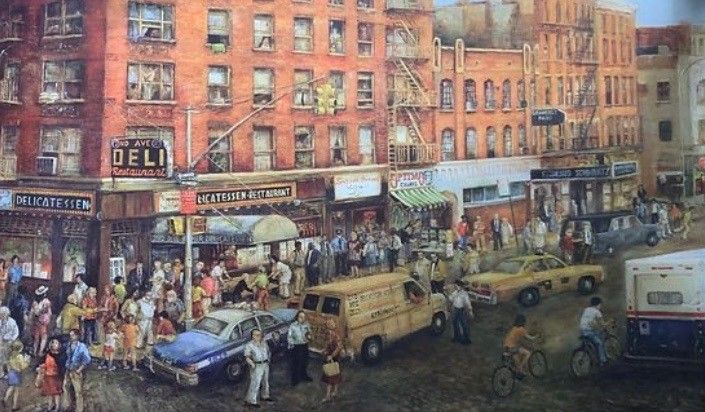
That lucky passerby might have become part of one of Hedy Pagremanski’s crowded street scenes—but only if he or she had paused to talk to the artist.
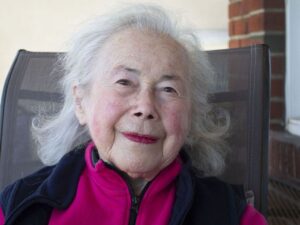
Pagremanski, 91, spent nearly five decades capturing the city and its people on canvas. She stopped traveling into Manhattan several years ago but still paints from her home in Long Beach, N.Y. The Covid-19 pandemic hasn’t slowed her down. “I have been drawing people who visit me on my outside deck,” she said. And for the past several months, she has been giving lessons to audiences on Facebook.
Abstract artist Mira Lehr, 85, is also reaching followers online. Working from her home in Miami Beach, she is producing a streaming series that connects environmental messages and her art. “Between the pandemic and global warming, it’s a call to wake up,” said Lehr, whose sculptures and multimedia works are in the permanent collection of renowned institutions such as the Smithsonian American Art Museum in Washington, D.C., and Los Angeles’s J. Paul Getty Museum.
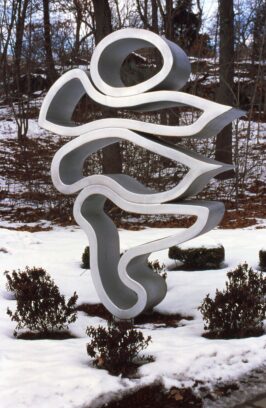
Sculptor, painter and filmmaker Rita Blitt, 89, is using a more traditional method of sharing her art: the publication, in September, of a retrospective of her six decades of work—Rita Blitt: Around and Round. Her monumental sculptures, many over 60 feet tall and reminiscent of dancing figures, can be seen in public spaces worldwide. Now, the colorful book brings the joy and exuberance of her works into homes.
These women are among a distinct cohort: older, established Jewish artists who are continuing to create art and attract new audiences even as they navigate the challenges of the ongoing pandemic. With strikingly different styles, the three bring socially conscious insights and a tangible sense of optimism to their creative endeavors.
Uplifting messages are part of Lehr’s online video series MiraVision. “For the first time in history, humanity can now see that pollution from fossil fuels can be reversed,” the artist said in an online introduction to the series, noting that the lockdowns at least temporarily reduced air pollution.
“It’s a very scary time in nature,” she explained in an interview. “I try to give a positive message so people can hold onto something and have some hope for the future.”
The lush flora of Florida serves as an inspiration. A labyrinth of mangrove roots sculpted of steel mesh, wire and paper comprised one installation at Lehr’s exhibit “High Water Mark” at the Mennello Museum of American Art in Orlando, which closed in September. Titled The Protectors, the design reflects the importance of mangroves to Florida’s ecosystem. Jewish themes are another focus. In 2019, she created 160 flower-like sculptures for the exhibit “A Walk in the Garden” at Miami Beach’s Jewish Museum of Florida-FIU.
Her current exhibit, “Planetary Visions: Mira Lehr from Spaceship Earth,” is at the Rosenbaum Contemporary art gallery in Boca Raton. Among its displays are three vibrant paintings named in honor of Justice Ruth Bader Ginsburg, who passed away in September: A Bright Star Has Left Us; RGB, a Force for Justice Gone, But the Work Continues; and Inspiration to the World. They were created, Lehr said, “during the time of reflection, solitude and quiet forced by the pandemic.”
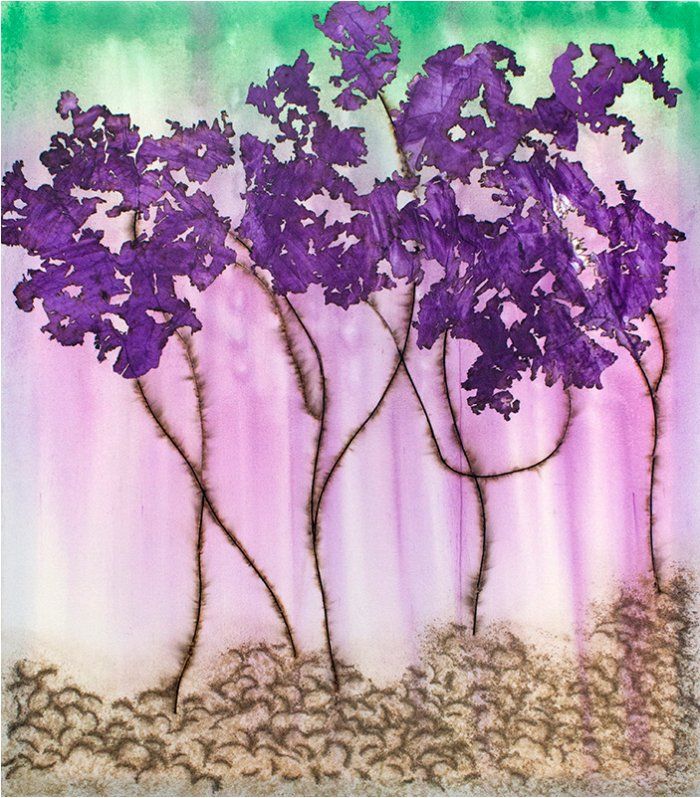
Pagremanski, for her part, has found more time for creativity during the pandemic. The isolation, she said, has been something of a gift. “I have never been so free to work.”
Since late March, she has been hosting weekly half-hour watch parties on Facebook, under the name Hedy Page. She fields questions from her several hundred viewers and discusses her works, including those in collections throughout the United States. Over 80 of these pieces capture New York City buildings, many of which she painted just before the buildings were demolished.
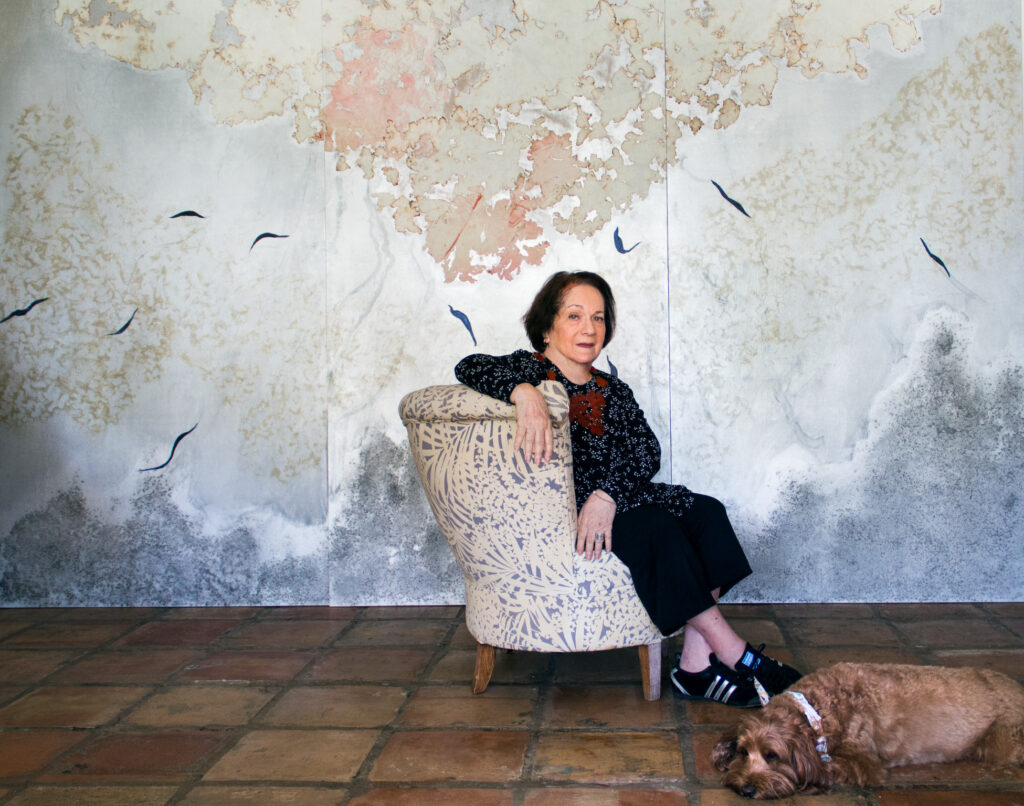
Among her most well-known pieces are two that celebrate iconic Jewish eateries. Yonah Schimmel Knish Bakery, in the permanent collection of the Museum of the City of New York, features the five-story red building on Houston Street that houses the bakery; and 2nd Avenue Deli is a bustling street scene that graces the placemats at the famous deli.
During the Facebook events, she shares stories from her life, reminiscing about the people she’s painted, from restauranteurs to pushcart owners, many of them immigrants, as is Pagremanski.
She was 8 when Hitler’s army marched into Vienna, where she was born. “Up to then, I had seen myself as part of our neighborhood, a part of our city,” she said. “Suddenly, I was a non-person, a person to despise.”
She fled to Panama with her parents and brother, then came to the United States in 1947, where she studied at the Art Institute of Chicago as well as other art schools. She and her husband, Eric Pagremanski, another Holocaust survivor, changed their last name to Page when they were naturalized, though she retains Pagremanski professionally.
“I owed it to myself to become the best artist I could become,” Blitt added, so “that I could give to the world through my art.”
Her Facebook sessions aren’t just art classes, she stressed: “They deal with the hurdles of isolation during Covid-19.” But the central theme, she added, is “here we are, let us be able to use it to make our lives better and learn and give each other help in doing so.”
Giving to others and sharing joy inform Blitt’s work, too, even during the difficulties of the pandemic. “I am beginning to feel challenged by having to stay inside so much of the time,” she acknowledged. Some of her projects were canceled or delayed, but she said that she feels “lucky to have my daughter and granddaughter nearby. And to be painting.”
“Kindness is Contagious. Catch it!” has been her motto since the 1980s, when Kansas City activist Beth Smith asked Blitt to create something to make the world a better place. The result was The Kindness Program, a social initiative that encourages acts of thoughtfulness and compassion. Now under the auspices of Synergy Services in Kansas City, Mo., the program has prompted thousands of students to write essays nominating others for the annual Kindest Kansas Citian Award and Rita Blitt Kindest School Award.
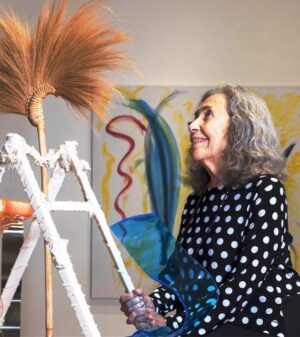
Blitt, who lives in Emeryville, Calif., grew up in Kansas City, Mo., in a Conservative Jewish home. Her mother, Dorothy Copaken, was a Hadassah regional president who spoke passionately about a Jewish homeland. “This is what I heard day in and day out,” said Blitt, who is also a member of Hadassah. “My lifeblood is in helping the Jewish people.”
Indeed, many of her paintings and sculptures appear at Jewish and other venues, including at the Kansas City Jewish Community Center. And in 2017, she donated over 50 of her abstract paintings to Jewish Family Services, also in Kansas City.
Her pieces are in museum collections, from the National Museum of Singapore to the Skirball Cultural Center in Los Angeles. Possibly the largest grouping is at the Mulvane Art Museum in Topeka, Kan., in its Rita Blitt Gallery and Sculpture Garden. With the publication of Around and Round, the museum is currently highlighting select pieces.
“Caring for others was what I saw growing up,” noted Blitt. “I owed it to myself to become the best artist I could become,” she added, so “that I could give to the world through my art.”
Abby Ellin is a former New York Times columnist and the author, most recently, of Duped: Double Lies, False Identities and the Con Man I Almost Married.










 Facebook
Facebook Instagram
Instagram Twitter
Twitter
Bill Bouris says
Ms. Ellin; I am very interested in getting in touch with Hedy Pagremanski. You did an article for Hadassah, that led off with mention of her art. That article featured the copy of a placemat from the 2nd Ave. Deli. What is special about all that, is I grew up in the apartment building above the Deli. We knew Abe Lebewohl from the time he worked at the Deli’s predecessor, soon after WW2. And, most amazing of all, my aged and widowed mother appears in the placemat!
This year we featured the placemat in our Greeting Card. I can send you an e-mail copy of it. It contains the story of an interesting coincidence. (I’ll send you a copy, if you’re interested.)
I just hearned that Hedy is the artist, and I’m trying, and hoping you can help with that. Anything you can do to help along in such an effort, would be much appreciated.